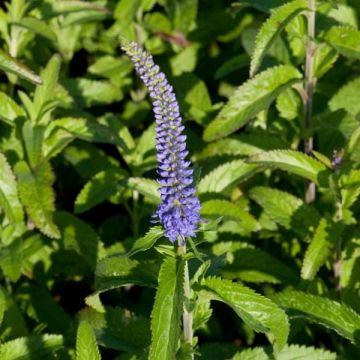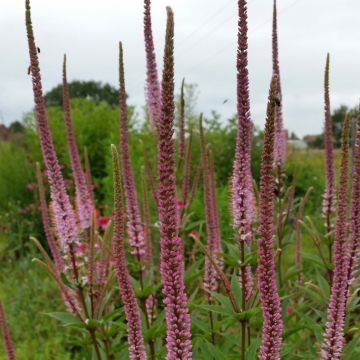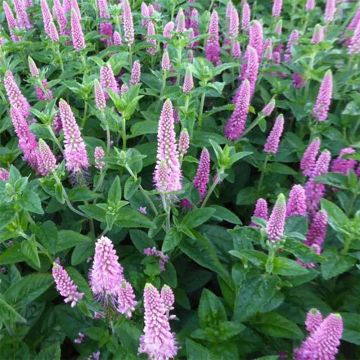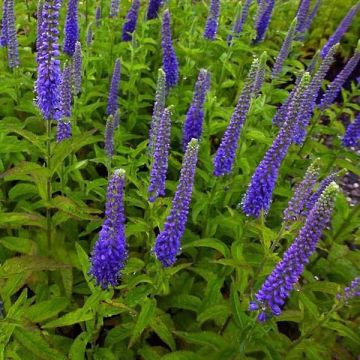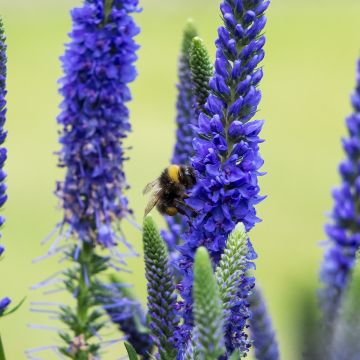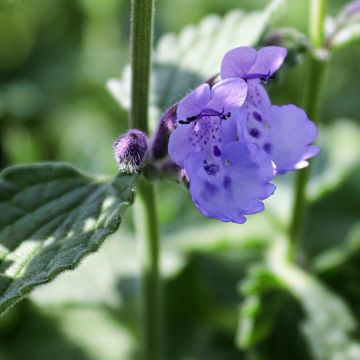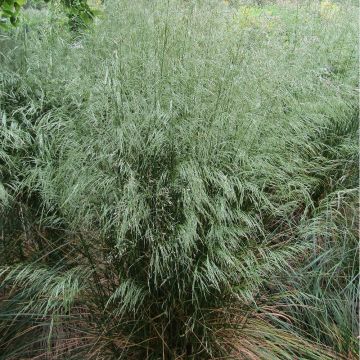

Veronica beccabunga - véronique des ruisseaux
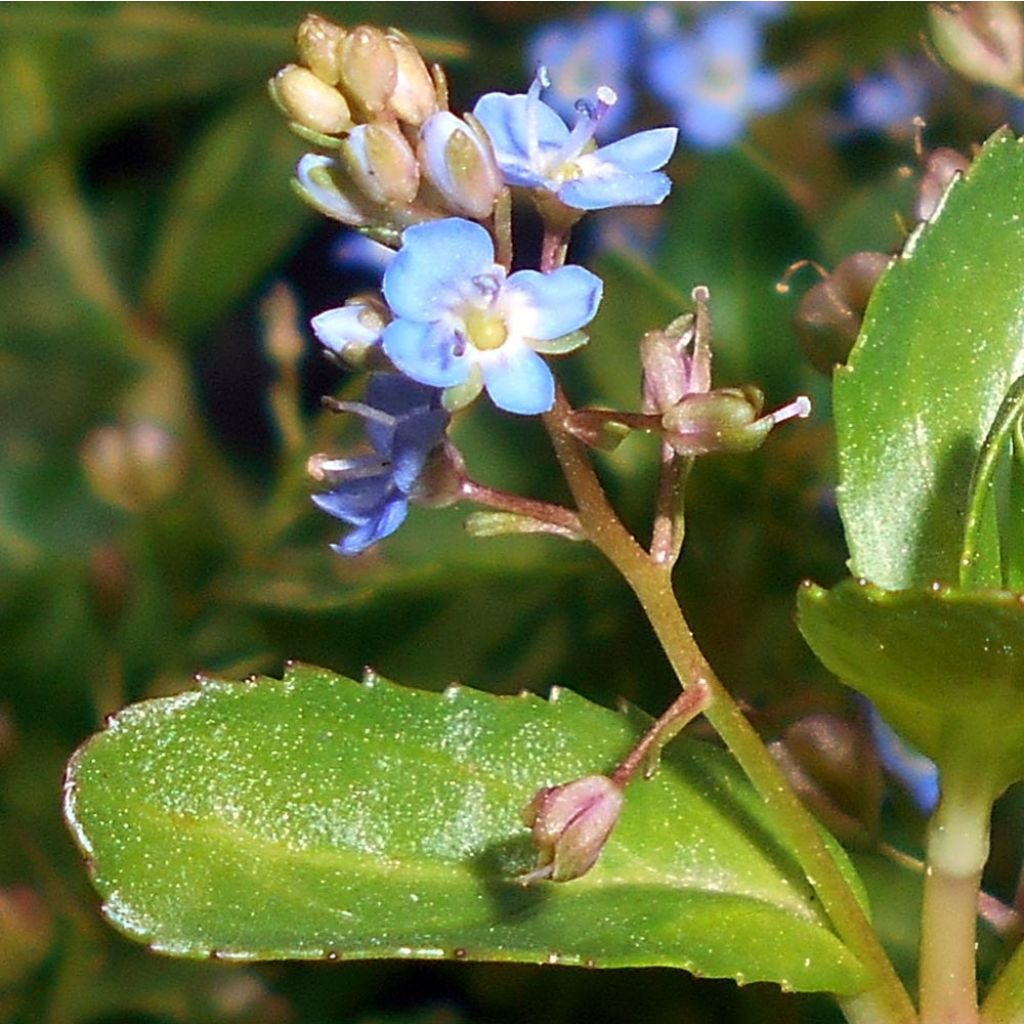

Veronica beccabunga - véronique des ruisseaux


Veronica beccabunga - véronique des ruisseaux


Veronica beccabunga - véronique des ruisseaux


Veronica beccabunga - véronique des ruisseaux
Veronica beccabunga
Veronica beccabunga
Brooklime, European Speedwell
This item cannot be shipped to the selected country
Delivery charge from €5.90
More information
Schedule delivery date,
and select date in basket
This plant carries a 12 months recovery warranty
More information
We guarantee the quality of our plants for a full growing cycle, and will replace at our expense any plant that fails to recover under normal climatic and planting conditions.
From €5.90 for pickup delivery and €6.90 for home delivery
Express home delivery from €8.90.
Does this plant fit my garden?
Set up your Plantfit profile →
Description
The aquatic Veronica beccabunga is a beautiful aquatic or riverside veronica, native to Europe, with hundreds of small blue-violet flowers with yellow hearts from May to September. It spreads to form a carpet through its long, thick, purple stems, carrying round, bright green leaves. It is ideal for the banks of a medium to large-sized pond, in sunny or semi-shaded areas.
Brooklime, also known as watercress, belongs to the Plantaginaceae family (it was formerly classified among the Scrophulariaceae). The Veronica genus is rich in ornamental species with extremely diverse habits and ecological requirements, but their flowers are almost identical in shape for all species, making identification easy. There are less aquatic or wetland veronicas than others and Veronica beccabunga is one of them, growing spontaneously in wet ditches, flooded areas, and on pond banks, from Western Europe to Northern Asia.
It forms a creeping mat that spreads rapidly through long stems. They are almost succulent and beautiful purplish-red, contrasting with the bright green, shiny elliptical leaves, which are semi-evergreen. Between May and September, its numerous clusters of small, typical, blue-violet "butterfly" flowers with yellow hearts, are loved by bees and other pollinators.
Veronica beccabunga needs a position which is not too shaded to flower well, and rich, consistent, ordinary, moist to wet soil to develop properly. Under good conditions, the plant, which only measures 20 cm (8in) in height, can easily cover 1 m². Make sure you leave enough space for it, a minimum of 8 to 10 m². You can remove some branches in the spring when growth resumes.
Plant it with other aquatic and riverside plants like Marsh Marigold, Pickerel Weed, Purple Loosestrife, Siberian Iris, or Variegated Sweet Flag and the impressive Royal Fern.
Report an error about the product description
Veronica beccabunga in pictures


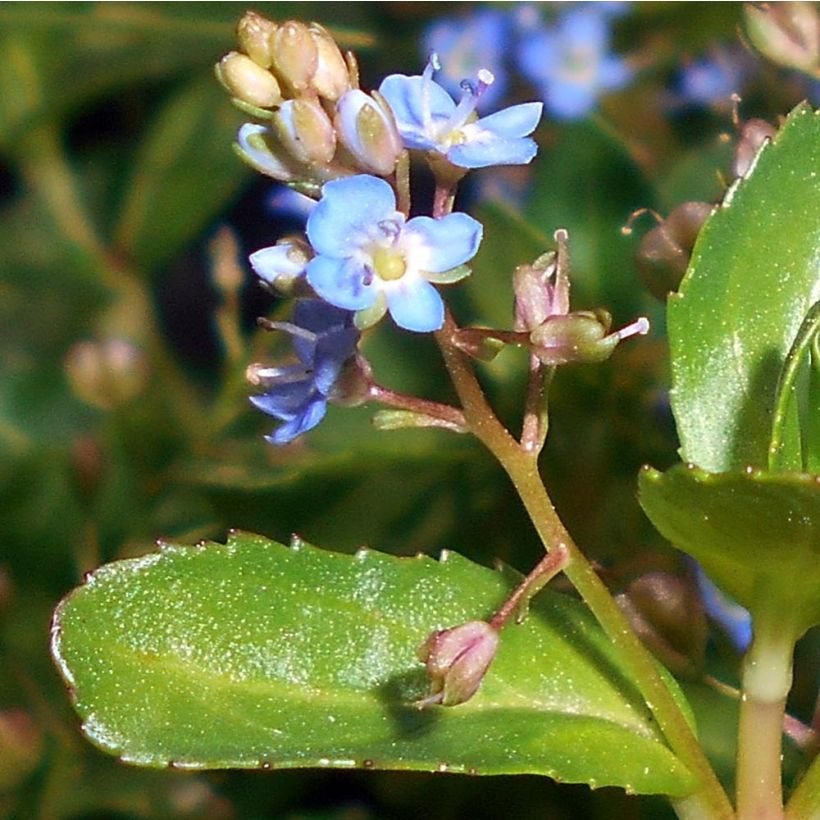



Flowering
Foliage
Plant habit
Botanical data
Veronica
beccabunga
Plantaginaceae
Brooklime, European Speedwell
Western Europe
Other Veronica - Speedwell
Planting and care
Veronica beccabunga requires a position which is not too shady to flower well, and rich, dense, alkaline, moist to waterlogged soil to develop properly. Under good conditions, the plant, which measures only 20 cm (8in) in height, can easily cover 1 m², so make sure it has enough room, a minimum of 8 to 10 m². You can remove unwanted branches in spring when growth resumes.
Planting period
Intended location
Care
-
, onOrder confirmed
Reply from on Promesse de fleurs
Summer flowering perennials
Haven't found what you were looking for?
Hardiness is the lowest winter temperature a plant can endure without suffering serious damage or even dying. However, hardiness is affected by location (a sheltered area, such as a patio), protection (winter cover) and soil type (hardiness is improved by well-drained soil).

Photo Sharing Terms & Conditions
In order to encourage gardeners to interact and share their experiences, Promesse de fleurs offers various media enabling content to be uploaded onto its Site - in particular via the ‘Photo sharing’ module.
The User agrees to refrain from:
- Posting any content that is illegal, prejudicial, insulting, racist, inciteful to hatred, revisionist, contrary to public decency, that infringes on privacy or on the privacy rights of third parties, in particular the publicity rights of persons and goods, intellectual property rights, or the right to privacy.
- Submitting content on behalf of a third party;
- Impersonate the identity of a third party and/or publish any personal information about a third party;
In general, the User undertakes to refrain from any unethical behaviour.
All Content (in particular text, comments, files, images, photos, videos, creative works, etc.), which may be subject to property or intellectual property rights, image or other private rights, shall remain the property of the User, subject to the limited rights granted by the terms of the licence granted by Promesse de fleurs as stated below. Users are at liberty to publish or not to publish such Content on the Site, notably via the ‘Photo Sharing’ facility, and accept that this Content shall be made public and freely accessible, notably on the Internet.
Users further acknowledge, undertake to have ,and guarantee that they hold all necessary rights and permissions to publish such material on the Site, in particular with regard to the legislation in force pertaining to any privacy, property, intellectual property, image, or contractual rights, or rights of any other nature. By publishing such Content on the Site, Users acknowledge accepting full liability as publishers of the Content within the meaning of the law, and grant Promesse de fleurs, free of charge, an inclusive, worldwide licence for the said Content for the entire duration of its publication, including all reproduction, representation, up/downloading, displaying, performing, transmission, and storage rights.
Users also grant permission for their name to be linked to the Content and accept that this link may not always be made available.
By engaging in posting material, Users consent to their Content becoming automatically accessible on the Internet, in particular on other sites and/or blogs and/or web pages of the Promesse de fleurs site, including in particular social pages and the Promesse de fleurs catalogue.
Users may secure the removal of entrusted content free of charge by issuing a simple request via our contact form.
The flowering period indicated on our website applies to countries and regions located in USDA zone 8 (France, the United Kingdom, Ireland, the Netherlands, etc.)
It will vary according to where you live:
- In zones 9 to 10 (Italy, Spain, Greece, etc.), flowering will occur about 2 to 4 weeks earlier.
- In zones 6 to 7 (Germany, Poland, Slovenia, and lower mountainous regions), flowering will be delayed by 2 to 3 weeks.
- In zone 5 (Central Europe, Scandinavia), blooming will be delayed by 3 to 5 weeks.
In temperate climates, pruning of spring-flowering shrubs (forsythia, spireas, etc.) should be done just after flowering.
Pruning of summer-flowering shrubs (Indian Lilac, Perovskia, etc.) can be done in winter or spring.
In cold regions as well as with frost-sensitive plants, avoid pruning too early when severe frosts may still occur.
The planting period indicated on our website applies to countries and regions located in USDA zone 8 (France, United Kingdom, Ireland, Netherlands).
It will vary according to where you live:
- In Mediterranean zones (Marseille, Madrid, Milan, etc.), autumn and winter are the best planting periods.
- In continental zones (Strasbourg, Munich, Vienna, etc.), delay planting by 2 to 3 weeks in spring and bring it forward by 2 to 4 weeks in autumn.
- In mountainous regions (the Alps, Pyrenees, Carpathians, etc.), it is best to plant in late spring (May-June) or late summer (August-September).
The harvesting period indicated on our website applies to countries and regions in USDA zone 8 (France, England, Ireland, the Netherlands).
In colder areas (Scandinavia, Poland, Austria...) fruit and vegetable harvests are likely to be delayed by 3-4 weeks.
In warmer areas (Italy, Spain, Greece, etc.), harvesting will probably take place earlier, depending on weather conditions.
The sowing periods indicated on our website apply to countries and regions within USDA Zone 8 (France, UK, Ireland, Netherlands).
In colder areas (Scandinavia, Poland, Austria...), delay any outdoor sowing by 3-4 weeks, or sow under glass.
In warmer climes (Italy, Spain, Greece, etc.), bring outdoor sowing forward by a few weeks.




































